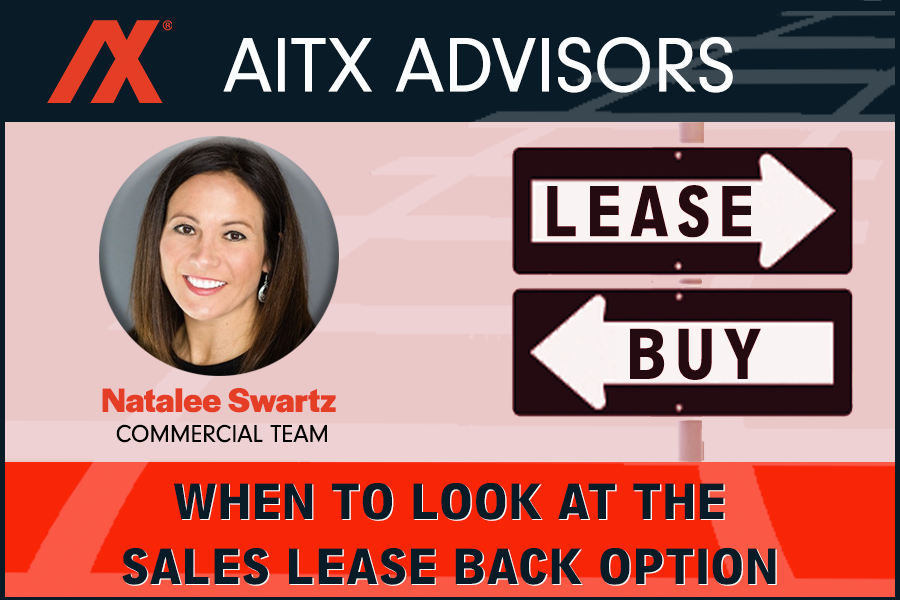Sales Lease Back Option
The decision for freight shippers to own or lease their railcar fleet depends on several internal and external factors that vary across companies. Amidst uncertainty from the current market and rate climate, many shippers are evaluating Sales Lease Back transactions, where a company, like AITX, will acquire the railcars owned by another company and lease them back to them.
As many partners have explored a Sales Lease Back, we wanted to dedicate an AITX Advisors post to reiterate some of its positives for shippers or fleet managers.
Natalee Swartz from our Commercial Team will walk you through some of the high-level advantages.

The most common reason to participate in a Sales Lease Back is to free up cash on a company’s balance sheet. Whether it is to address debt, expansion, strategic pivots, or other company objectives, a cash injection into one’s business can offer more options on how to execute on business goals.

In a heightened rate environment, it lowers ones burden to amortize a residual value commitment rather than the entirety of principal. As railcars tend to have long lifecycles, ownership payments often have numerous installments and larger monthly commitments, especially when rates are trending upward.

Every company has varying time horizons, cyclicality, and business schedules. Unlike when owning an asset, when leasing railcars, companies have the flexibility to elect long or short term leases more closely aligned with their overall strategic goals.

There is increased value to having a dedicated leasing partner whose sole function is to help navigate the changing intricacies of the rail business.
This includes having fleet management expertise to advise you on the right car type, car size, and age distribution.
If you elect a full-service relationship, your leasing partner will manage your maintenance and repair plan including mandatory qualifications, quality best-practices, and costs associated with repair locations compared to your freight route.
Finally, there are advantages to working with a lessor who is directly involved in regulatory and compliance organizations from the AAR to RSI. Compliance rules and demands change frequently and having a proactive, agenda-setting partner saves time, money, and organizational pressures.
Staying current on issues pertaining to fleet, repair, and compliance requires more than an internal rail specialist. Having a dedicated team to look out for your best interest is a built-in advantage.

Ultimately, the decision around owning or leasing your railcar fleet comes back to where your company wants to allocate resources and gain expertise.
Some seek railcar ownership to control their own asset investment and immerse themselves in the details of rail transportation and operations.
Others prefer to not take on the financial and organizational commitment of ownership. Leasing allows them to spend less time understanding the rail business and more time on their own logistics and supply chain optimization.
Each company needs to decide where they want to focus and how they can leverage the most value.
If you have more questions about Sales Lease Backs or any of our other leasing options, feel free to reach out to one of our Commercial Team members.
